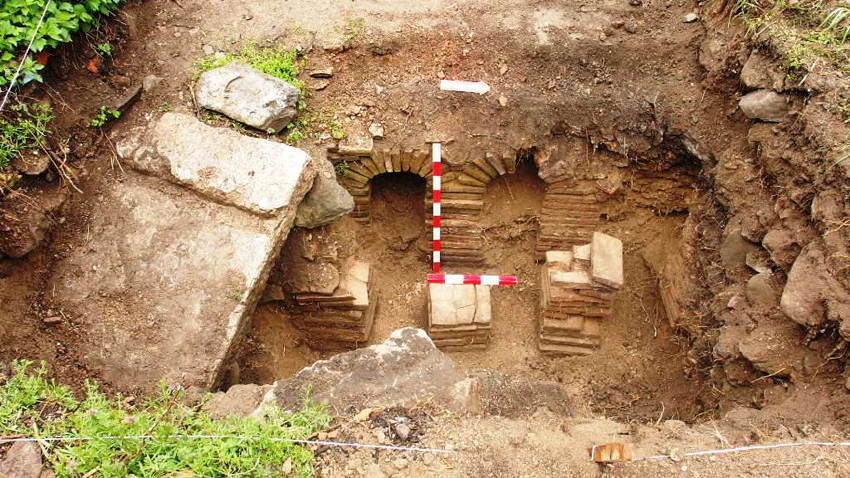Angela,I never thought the Romans could reach that far...
Anyway,they must've been exhausted after such a long trip,so,they might have stayed,at least, for a while.
 http://bmcr.brynmawr.edu/2001/2001-10-14.html
http://bmcr.brynmawr.edu/2001/2001-10-14.html
The site seems to be pretty near the route of the Via Trajana, yes?
"What is more, the site is easily accessible because it is located by a major contemporary road going through the
Troyan Pass of the Balkan Mountains, which in effect mirrors
Via Trajana, Emperor Trajan’s Road. Via Trajana, which runs through the Troyan Pass of the Balkan Mountains, was vital in Roman Emperor Trajan’s wars for conquering the
Dacians, the resisting
Thracian tribes north of the
Lower Danube, in today’s Romania. It linked the
Ancient Roman city of Philipopolis (today’s Plovdiv in Southern Bulgaria) in the Roman province of Thrace, with two major Roman outposts on the Lower Danube frontier, the so called limes – Ulpia Oescus near today’s town of Gigen and Novae near today’s town Svishtov, in the Roman province of Moesia."
It appears to be quite a complex...fortress and a sort of ancient spa, with "jacuzzi's" and indoor pools. I'm sure they had good food too. Apparently, high level officials, military and civil, liked their comforts when they traveled.
As the site was in use for about 400 years, I would indeed say they stayed for a while, at least some of them.

Of course, with the passing of the centuries it's unclear how many of them would have been auxiliaries. I would imagine it must have been something like the fortresses and surrounding settlements that have been excavated in Britain, many of which had their baths attached.
Another thing that struck me about those excavations was how much of their own foods they imported, and not just garum! They ate very well, the legionnaires, not just porridge, as used to be supposed. They raised their own cows and pigs (pigs seem by far to have been the favorites for consumption), ate poultry, had fish pools, and then, as I said, imported their wine and olive oil, grapes and figs, lentils and spices like coriander and other foods from the Mediterranean. They also, from the number of shells, loved oysters! In one case they seem to have imported them from a good source in the south of England all the way to the north.
https://www.academia.edu/4818571/Fo..._the_a rmy_in_the_Roman_north-west_provinces
I wonder if they'll be able to find more evidence of day to day life at a place like this....
Oh, some pictures have turned up:
I like show and tell, so... this is a nice NOVA documentary on them.


